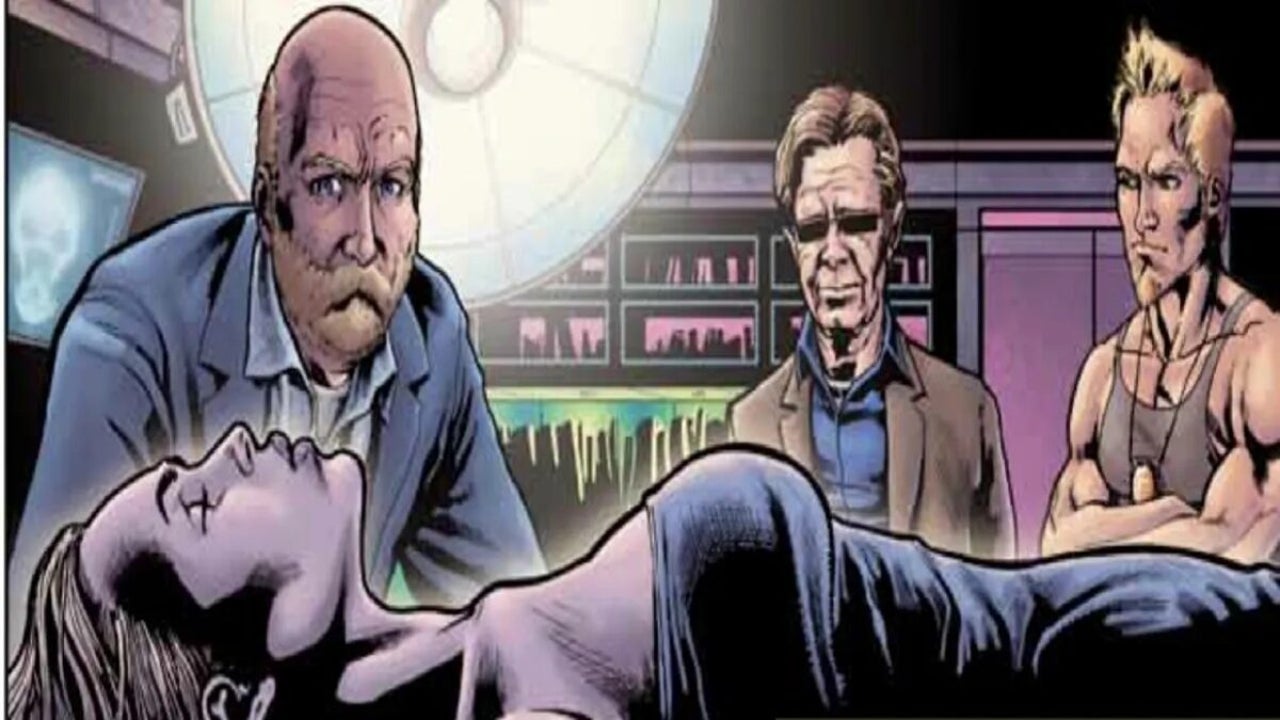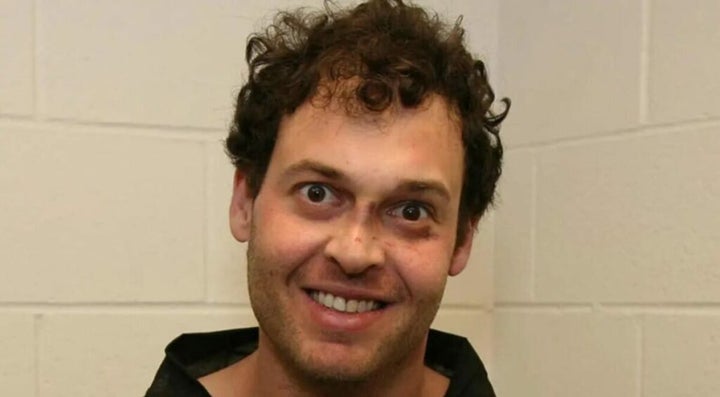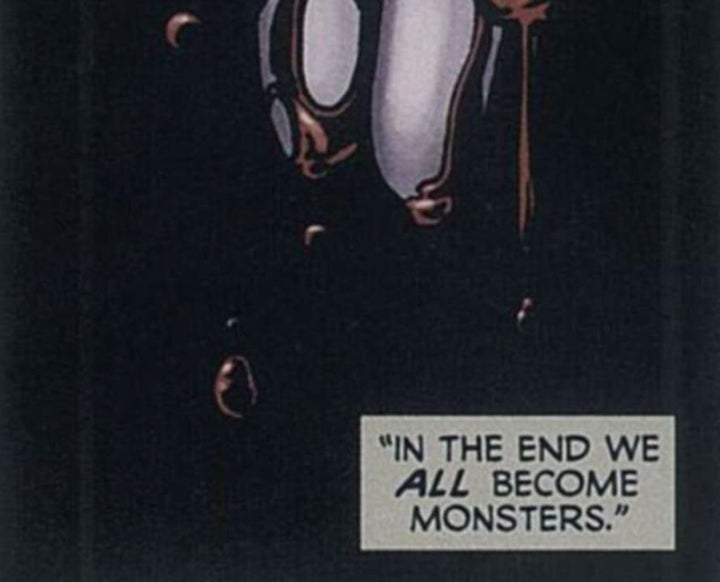News
The disturbing case of Blake Leibel: Comic book writer turned killer
A story that all of Hollywood wants to forget

- March 28, 2023
- Updated: May 23, 2024 at 6:44 AM

In 1994, issue 54 of DC‘s Green Lantern featured an image that eventually became unfortunately iconic: Kyle Rayner’s girlfriend, who had been killed by Force Majeure, had her body stuffed in the fridge. This moment gave name to a comic book cliché coined by Gail Simone: women in refrigerators. The list of names of female characters killed, tortured or mutilated in comics is endless, ranging from Elektra herself to Gwen Stacy. However, as terrible as this topic is, there is a scriptwriter who decided to go one step further… And he committed, based on his own comic book, one of the worst crimes in the history of Hollywood.
Warning: if you are very squeamish, it is better not to read any further because the story of ‘Syndrome’ is worthy of a true crime.
The wealthy screenwriter
If there are two words that don’t usually go together in real life, it’s “screenwriter” and “rich.” Yet Blake Leibel was. Born in 1981, his family was one of the most powerful in all of Canada. His father was a construction magnate. His mother, meanwhile, was part of the Chitels, founders of one of Toronto’s most powerful plastics factories. Everything was going well, until one day they decided to separate and both siblings split up with their parents.

Blake stayed with Eleanor, while Cody went to live with his father (who, interestingly, was the first Olympic sailor to test positive for doping in 1976). Blake’s salary when he came of age in 1999 was 18,000 euros a month. Nothing, about the same as any of us. So, he wouldn’t have much of a problem moving to Los Angeles and pursuing a career as an artist, not even as a hobby.
The thing is, he had some luck: in 2008 he became the director of three episodes of the animated series of ‘The Mad History of the Galaxies’ and in 2009 he was able to direct and script ‘Bald’, a film promoted with the slogan “No money. No hair. No shame” in which a college student started an erotic website with the hottest girls on campus to earn money and give a hair transplant to his roommate. In fact, it’s described as if “the worst parts of Annie Hall met the worst parts of American Pie.” But we’re not here to judge her career, we’re here to understand how and why she became The Comic Book Killer.
The boundary between fiction and reality
Leibel had already written some comics before 2010, such as ‘When Kingdoms Collide’, ‘Operation: Redux’ or ‘United free worlds’. These were ultra-violent comics, but nothing out of the ordinary. Other authors like Mark Millar also recreate themselves in violence and in their real life they are still good people. However, Blake Leibel was no Mark Millar. When in 2010 he released ‘Syndrome’, a graphic novel created by him, scripted by Daniel Quantz and RJ Ryan and illustrated by David Marquez (who has gone through Marvel, DC and anywhere you can imagine). None of his co-workers noticed anything unusual about him despite the gruesome nature of the story.
The first page of the comic posed the question “Why should we spare the life of an unrepentant murderer?”, to which the answer was given “Because you don’t do good by doing evil”. Throughout the comic, grotesque situations (a beheaded woman, a whole family murdered, a person hanged and bled to death…) are intertwined in a story about a serial killer and the obsession of four characters.

The comic didn’t have much of a run (it didn’t matter, Leibel launched it with his own publishing house and let’s remember that he received $18,000 a month to cover any expenses). Four years after his departure, Iana Kasian, a young Ukrainian woman, emigrates to the United States to work as a model in California. There she meets Leibel, who had just broken up with his wife, Amanda Braun, after a few erratic weeks: fate, it seemed, had brought them together. Expensive gifts followed (including a Mercedes convertible), the two moved in together, and finally, on May 3, 2016, their daughter Diana was born. 23 days later, Iana would be dead.
Taken from the vignettes
“They kill. We kill. In the end we all become monsters”. Another person to meet in this story is Constance Buccafurri, Leibel’s mistress (of whom Iana, of course, knew nothing). In mid-May, with their newborn daughter, the screenwriter went to his lover’s house and sexually abused her. It all happened in a single day: he got out of jail by paying $100,000 but by the time he returned to his apartment, the Ukrainian woman had left with her daughter and her mother, who was visiting, to a nearby hotel.

Imagine for a moment the life of Blake Leibel, a person who had always had absolutely everything: money, career as a screenwriter, women… who is suddenly thrown in jail and, when he gets out, discovers that his girlfriend has refused to see him. The man feigned repentance and insisted on spending more time with her, asking her to come back to the apartment to sort out their problems. Luckily, Diana and Iana’s mother stayed at the hotel waiting for him to return. But she never ever came back.
We won’t go into details because they are too gruesome, but suffice it to say that on May 24 Leibel committed an agonizing and brutal murder that seemed inspired by those in ‘Syndrome’. He drained the blood from her body and scalped her: that was only the beginning of the horrible torture Iana Kasian suffered. When the police arrived, alerted by Iana’s mother, the screenwriter told them she was fine, just resting. On May 26, finally, a patrol car broke down the door and entered a house that instead of a floor had blood on it. Blake, who had shielded his room with closets and mattresses, sat in shock next to a mutilated, grotesque corpse.

As luck would have it, Leibel ended up in jail sentenced to life in prison without the possibility of review, despite maintaining that he was innocent. The coroner stated, in examining the facts, “I’ve never seen anything like this before. And I doubt if any coroner in this country or beyond has ever seen anything like this outside of, perhaps, wartime”. The prisoner is serving his sentence in California, thus putting an end to one of the blackest episodes in the history of comics… And, probably, of Hollywood.
Some of the links added in the article are part of affiliate campaigns and maand represent benefits for Softonic.
Editor specializing in pop culture who writes for websites, magazines, books, social networks, scripts, notebooks and napkins if there are no other places to write for you.
Latest from Randy Meeks
- From the random button to interactive series: the 5 biggest mistakes in Netflix history
- The 6 best animes you can't miss this spring
- The psychedelic PlayStation video game that was actually an artistic project that no one understood
- The Switch 2 has disappointed me with its luxury prices for a premium remake
You may also like

State treasurers urge Tesla’s board to increase oversight on Elon Musk
Read more

Ubisoft announces a collectible card game based on NFTs
Read more

Nintendo may not have enough Switch 2 units for the console's launch
Read more

Love, Death, and Robots returns with a fourth season that is very musical
Read more

The alpha of Marathon leaves mixed feelings due to a very peculiar design decision
Read more

We know all the details about FBC: Firebreak, the new game from the creators of Alan Wake and Control
Read more